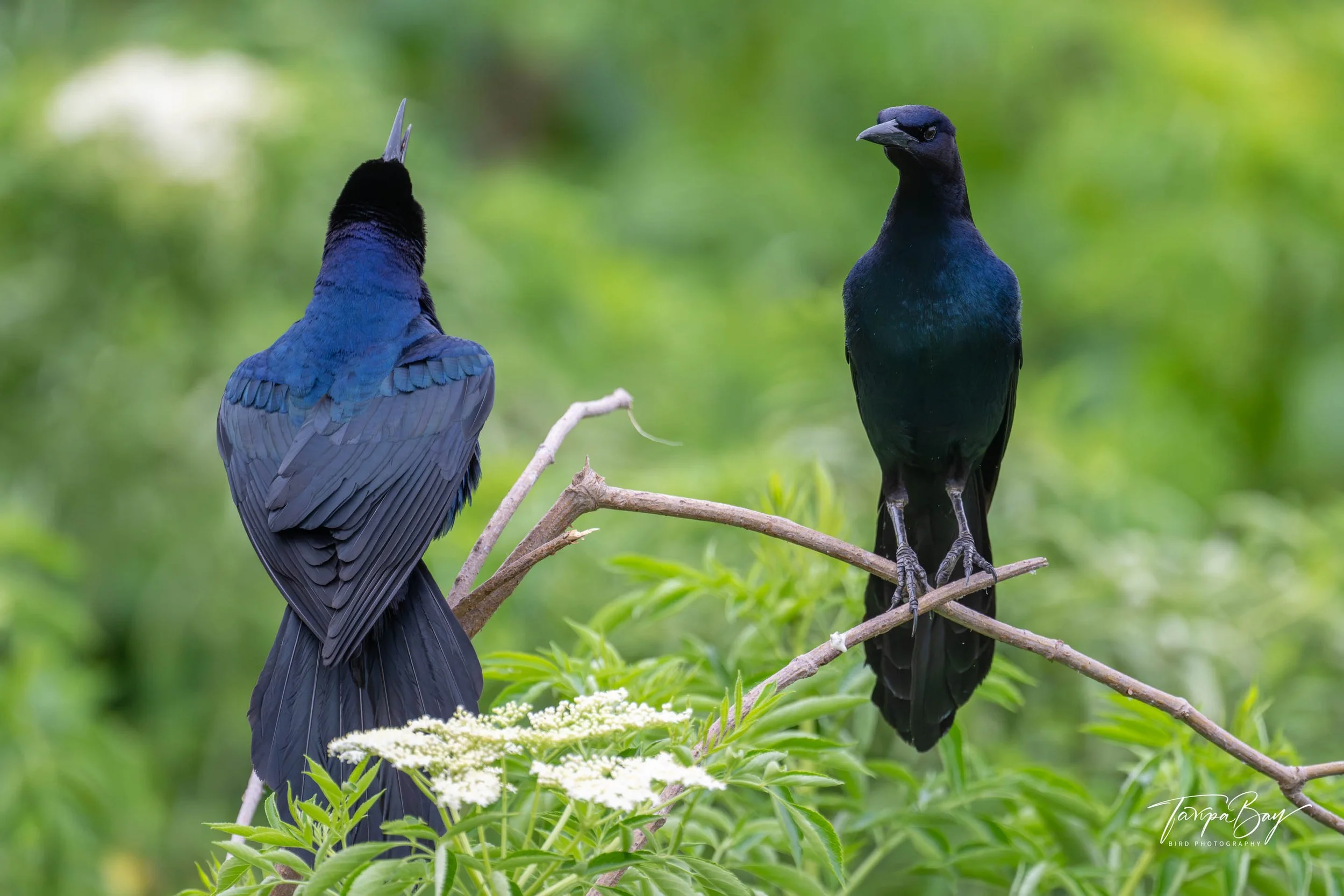Bill-up and Ruff-out Displays of the Boat-tailed Grackle
Birds often display unique and interesting behaviors during breeding season, and the Boat-tailed Grackle is no exception. On a recent trip to a rookery near my home (where I went with the goal of photographing juvenile Wood Storks), a pair of male Boat-tailed Grackles stole the show as they demonstrated Bill-up and Ruff-out agonistic displays.
The Boat-tailed Grackle is a large, conspicuous blackbird found along the coasts of eastern North America. The species was first described in 1819 by the French ornithologist Louis Jean Pierre Vieillot from a specimen collected in New Orleans, Louisiana. The easily recognized, pigeon-sized male is loud, with a long tail and iridescent blue-green plumage. The less conspicuous, cinnamon-colored female is half the size of the male and, to a casual observer, appears to be a different species (1).
Boat-tailed Grackles are commonly seen in freshwater and salt water marshes, nesting in trees and brush in small groves near water (2). Grackles exhibit a complex social hierarchy based on age and sex, with older males at the top of the grackle social order. The lower-ranked bird usually moves away as a higher-ranked bird approaches. During mating season males begin to point their bills up and puff out their chests to show dominance. Two common agonistic displays are Bill-up and Ruff-out.
In a Bill-Up, the bird points its bill up while sleeking its head and neck feathers. He may hold this position for up to 20 seconds, all while rapidly blinking his light blue nictitating membrane. The bird will also fluff up its breast feathers and sometimes pivot its head to accentuate iridescence in the neck region. Males engaged in Bill-ups, such as the two pictured below, jockey for position and seemingly attempt to crowd its opponent off the end of the perch.
Boat-tailed Grackle Bill-Up Display. Nikon Z9 with Nikkor Z 800mm f/6.3 lens mounted to a tripod. ISO 2000, f/6.3, 1/1250 sec.
Boat-tailed Grackles typically alternate Bill-up displays with Ruff-out displays. In the Ruff-out, the bird’s contour and head feathers are erected, tail fanned, bill horizontal or elevated, and light blue nictitating membrane is blinked. The ruff-out involves 3 stages that coincide with 3 components of its song. During the first stage, wings are slightly drooped and quivered; at high intensity, wings may be raised to the level of the back. At the start of the second stage, the bird often steps or lunges at the opponent. Wings are quickly raised above the back and briefly vibrated during the middle component of the song. Coinciding with this wing-flip, the bird rapidly snaps its bill. Wing-flip is synchronized with the guttural-roll component of the primary song. The third stage is a repetition of the first (1).





Sources:
Post, W., J. P. Poston, and G. T. Bancroft (2020). Boat-tailed Grackle (Quiscalus major), version 1.0. In Birds of the World (A. F. Poole, Editor). Cornell Lab of Ornithology, Ithaca, NY, USA. https://doi.org/10.2173/bow.botgra.01
Boat-tailed Grackle. Audubon Field Guide to North American Birds. https://www.audubon.org/field-guide/bird/boat-tailed-grackle, accessed 5 May 2023.

